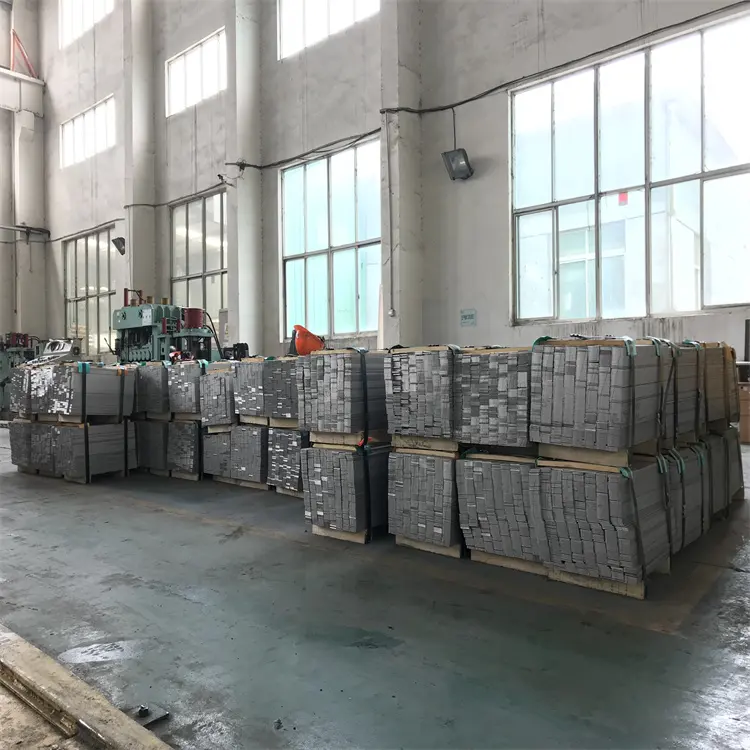Understanding the Superior Properties of 316L Stainless Steel Bars
In the world of metallurgy and industrial applications, 316L stainless steel bar stands as a benchmark for corrosion resistance and durability. This remarkable material has revolutionized various industries, from marine equipment manufacturing to chemical processing plants, thanks to its exceptional properties and versatile applications. The addition of molybdenum and its low carbon content makes 316L stainless steel bar particularly resistant to corrosive environments, setting it apart from other metal varieties.
When industries require materials that can withstand aggressive environments while maintaining structural integrity, 316L stainless steel bar emerges as the go-to choice. Its unique composition and manufacturing process create a material that not only resists corrosion but also offers excellent mechanical properties, making it invaluable across diverse applications.
Chemical Composition and Structural Advantages
Essential Elements that Define Performance
The exceptional performance of 316L stainless steel bar stems from its carefully balanced chemical composition. The material contains 16-18% chromium, 10-14% nickel, and 2-3% molybdenum, with carbon content kept below 0.03%. This precise combination creates a robust material that forms a self-healing passive layer, providing superior protection against corrosive elements.
The low carbon content in 316L stainless steel bar prevents carbide precipitation during welding or exposure to high temperatures, effectively reducing the risk of intergranular corrosion. This characteristic makes it particularly valuable in applications where weld decay could compromise structural integrity.
Microstructural Features and Their Impact
The austenitic structure of 316L stainless steel bar contributes significantly to its corrosion resistance. This microstructure, maintained stable through careful control of alloying elements, ensures consistent properties throughout the material. The face-centered cubic crystal structure provides excellent ductility and toughness, even at cryogenic temperatures.
The presence of molybdenum in 316L stainless steel bar enhances pitting and crevice corrosion resistance, particularly in environments containing chlorides. This element strengthens the passive layer and improves the material's resistance to reducing acids, making it suitable for use in marine and chemical processing applications.

Environmental Performance and Durability
Marine Environment Applications
In marine environments, where exposure to saltwater and harsh weather conditions is constant, 316L stainless steel bar demonstrates exceptional resilience. The material's resistance to chloride-induced stress corrosion cracking makes it ideal for offshore platforms, marine hardware, and boat fittings. Its ability to maintain structural integrity even after prolonged exposure to seawater has made it indispensable in maritime industries.
The superior performance of 316L stainless steel bar in marine applications extends beyond simple corrosion resistance. Its ability to withstand varying temperatures, high humidity, and constant exposure to salt spray while maintaining its aesthetic appearance makes it a cost-effective choice for long-term marine installations.
Chemical Processing Industry Performance
In chemical processing facilities, 316L stainless steel bar faces some of the most challenging operating conditions. The material excels in environments with aggressive chemicals, high temperatures, and varying pH levels. Its resistance to both oxidizing and reducing environments makes it suitable for a wide range of chemical processing equipment and components.
The stability of 316L stainless steel bar at elevated temperatures, combined with its excellent resistance to chemical attack, ensures reliable performance in reactors, heat exchangers, and storage tanks. The material's ability to maintain its properties while handling corrosive chemicals significantly reduces maintenance requirements and extends equipment lifetime.
Manufacturing and Processing Considerations
Fabrication Methods and Best Practices
The fabrication of 316L stainless steel bar requires specific attention to maintain its corrosion-resistant properties. Proper handling, cutting, and welding techniques are essential to preserve the material's integrity. The material's good machinability and weldability make it suitable for various manufacturing processes, though care must be taken to avoid contamination during fabrication.
Heat treatment and surface finishing play crucial roles in optimizing the performance of 316L stainless steel bar. Proper post-fabrication treatments, such as passivation, enhance the material's corrosion resistance by ensuring the formation of a uniform protective oxide layer.
Quality Control and Testing Standards
Maintaining strict quality control standards during the production of 316L stainless steel bar is essential for ensuring consistent performance. Regular testing of mechanical properties, chemical composition, and corrosion resistance helps verify compliance with industry specifications. Advanced testing methods, including electrochemical testing and microscopic analysis, confirm the material's suitability for demanding applications.
Certification and documentation of 316L stainless steel bar properties provide assurance to end-users regarding material quality and performance capabilities. This documentation becomes particularly important in critical applications where material failure could have severe consequences.
Future Trends and Innovations
Emerging Applications and Technologies
The development of new manufacturing technologies continues to expand the potential applications of 316L stainless steel bar. Advances in surface treatment techniques and the integration of smart manufacturing processes are enhancing the material's performance characteristics. The growing focus on sustainable materials has also highlighted the recyclability and long service life of 316L stainless steel bar as significant advantages.
Research into improved alloy compositions and processing methods promises to further enhance the capabilities of 316L stainless steel bar. These developments could lead to even better corrosion resistance and mechanical properties, opening new possibilities in challenging applications.
Sustainability and Economic Impact
The long-term sustainability of 316L stainless steel bar makes it an environmentally responsible choice. Its durability reduces the need for replacement, while its complete recyclability minimizes environmental impact. The material's contribution to reducing maintenance costs and extending equipment lifetime provides significant economic benefits across various industries.
The growing emphasis on lifecycle cost analysis has highlighted the advantages of using 316L stainless steel bar in corrosive environments. While initial material costs may be higher compared to alternatives, the reduced maintenance requirements and extended service life often result in lower total ownership costs.
Frequently Asked Questions
How does 316L stainless steel bar differ from other stainless steel grades?
316L stainless steel bar contains higher levels of molybdenum and nickel compared to other grades, along with lower carbon content. These differences result in superior corrosion resistance, particularly in environments containing chlorides and reducing acids. The 'L' designation indicates low carbon content, which prevents sensitization during welding.
What are the optimal maintenance practices for 316L stainless steel bar installations?
Regular cleaning with appropriate non-abrasive cleaners, periodic inspection for signs of corrosion, and prompt attention to any surface damage are essential maintenance practices. Avoiding contact with carbon steel tools and maintaining proper surface finish help preserve the material's corrosion resistance properties.
Can 316L stainless steel bar be used in high-temperature applications?
Yes, 316L stainless steel bar maintains its structural integrity and corrosion resistance at elevated temperatures up to approximately 870°C (1600°F). However, specific temperature limits depend on the application environment and stress conditions. Regular monitoring of high-temperature applications is recommended to ensure optimal performance.


